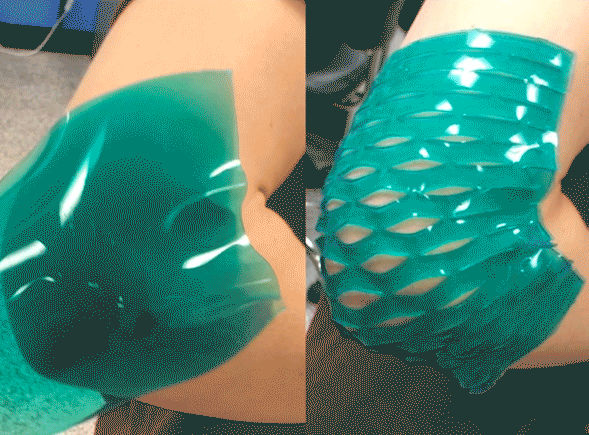Researchers from MIT are using 3D printing and an art form called kirigami to make plasters which actually stick to your elbows and knees.
Everyone knows the irritation of hurting a joint, applying a plaster and it falling off just a few minutes later. If it’s not falling off, a plaster on your knee or elbow is restricting your movement. It’s a well-known truth that, whether you’ve scraped your elbow or cut your knee, plasters won’t stick unless you remain completely still.
However, researchers from MIT are using 3D printing and a paper folding art form to create working joint plasters. The method is inspired by kirigami. This art form which is based on origami but allows small cuts and glue.
The new and improved bandages can withstand over 100 joint bends as a result of the cuts.
“Currently in the soft electronics field, people mostly attach devices to regions with small deformations, but not in areas with large deformations such as joint regions, because they would detach. I think kirigami film is one solution to this problem commonly found in adhesives and soft electronics,” said Ruike Zhao, a postdoc in MIT’s Department of Mechanical Engineering and lead author of the paper.

3D Printing Meets Art to Make the Perfect Plaster
To create thin kirigami films, the researchers poured a rubber solution, called a liquid elastomer, into 3D printed molds. These molds had offset grooves and various spacings.
After the solution was cured, the researchers took the thin elastomer layers out of the molds. They then added the important cuts.
Although the researchers chose to use elastomer, they explain that it’s possible to use many different materials. For example, anything from soft polymers to hard metals.
To make the elastomer layer stick, Ruike added a thin adhesive coating. Then, she stuck it to a volunteer’s knee.
The volunteer was asked to move about and Ruike took note of how well the layer would stick. It stuck for 100 knee bends.
Although that may not sound like a lot if you’re wearing a plaster for the whole day, comparatively, a layer without slits fell off after just one bend cycle.
“In most cases, people make cuts in a structure to make it stretchable. But we are the first group to find, with a systematic mechanism study, that a kirigami design can improve a material’s adhesion,” Ruike adds.
The researchers have now filed a patent for this technique. They are also working with a medical supply company so we may soon see kirigami plasters on our shelves.
Interested in finding out more? Check out the press release on the MIT website.

Website: LINK

